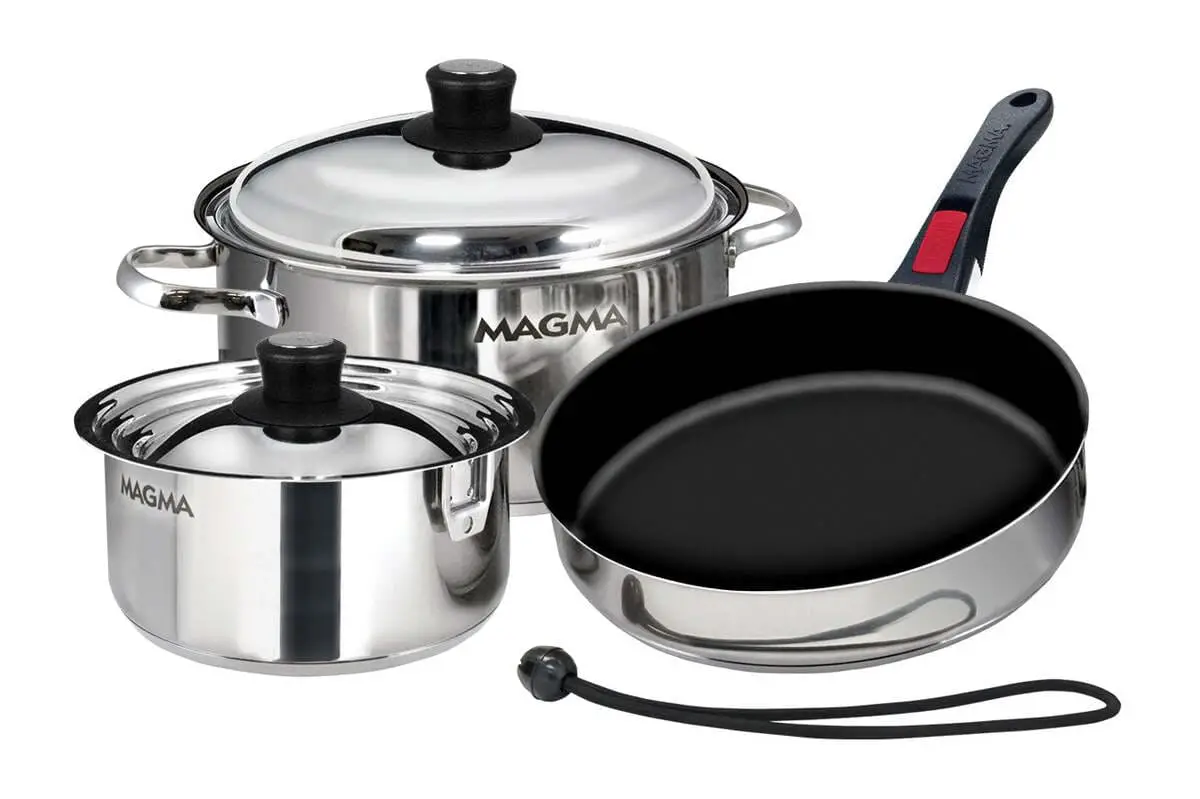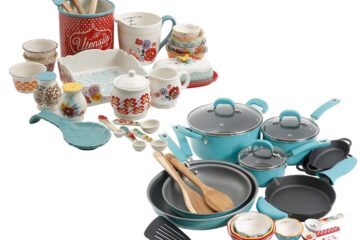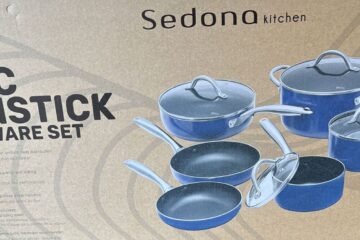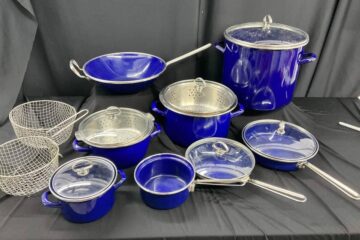Non-induction cookware is a type of cookware that is not compatible with induction cooktops or stoves. This type of cookware is made of non-magnetic materials, which means it will only work on a regular gas stove. One of the advantages of non-induction cookware is that it can come in different shapes, unlike induction cookware that will always come in a flat bottom.
To determine if a pot or pan is induction-compatible, one can check the manufacturer’s notes on the box or take a magnet to the store and test it. If one wants to use non-induction cookware on an induction cooktop, they will need additional items such as converter disks and steel wire mesh. These items can make non-induction cookware compatible with induction cooktops, but issues may still arise.
It is important to understand the difference between induction and non-induction cookware. Induction cookware is made with ferrous metal, while non-induction cookware is not. This means that induction cookware will work on an induction stovetop, while non-induction cookware will not. Knowing the difference between the two can help one choose the right cookware for their needs.
What Is Non Induction Cookware?
Non-induction cookware refers to cookware that is not compatible with induction cooktops or induction stoves. This type of cookware is made of non-magnetic materials and will only work on a regular gas stove. One advantage of non-induction cookware is that it can come in different shapes, unlike induction cookware that will always come in a flat bottom.
Non-induction cookware is typically made of materials such as aluminum, copper, and glass. These materials do not contain iron, which is necessary for induction cookware to work. Non-induction cookware is also not designed to withstand the high temperatures and rapid temperature changes that induction cooking can produce.
When using non-induction cookware on a gas stove, it is important to note that the heat distribution may not be as even as with induction cookware. This can result in hot spots and uneven cooking. Non-induction cookware may also take longer to heat up and cool down compared to induction cookware.
Advantages of Non Induction Cookware
Non-induction cookware has been around for a long time and is still a popular choice for many households. In this section, we will discuss the advantages of using non-induction cookware.
Easy to Use
One of the significant benefits of non-induction cookware is that it is easy to use. Unlike induction cookware that requires a specific type of cooktop, non-induction cookware can be used on any stove, including electric and gas. This makes it a versatile option for those who may have different types of stovetops in their homes.
Durable and Long-Lasting
Non-induction cookware is also known for its durability and long-lasting properties. It is typically made from sturdy materials such as stainless steel, cast iron, or aluminum, which can withstand high temperatures and heavy use. This makes it an excellent investment for those who cook frequently or have large families.
Affordable
Another advantage of non-induction cookware is that it is generally more affordable than induction cookware. Since it does not require any special technology or materials, manufacturers can produce it at a lower cost. This makes it a budget-friendly option for those who want to invest in high-quality cookware without breaking the bank.
Disadvantages of Non Induction Cookware
Non induction cookware is not suitable for use on an induction cooktop or stove. This type of cookware does not have magnetic ferrite qualities on the body and base of the cookware to attract magnetic field and transfer heat to your cookware. Here are some of the disadvantages of non induction cookware:
Not Suitable for Induction Cooking
Non induction cookware cannot be used on an induction cooktop or stove. This is because induction cooktops and stoves use magnetic fields to transfer heat to the cookware. Non induction cookware does not have magnetic properties, so it cannot be used on induction cooktops or stoves.
Heats Unevenly
Non induction cookware heats unevenly. This is because the heat is not evenly distributed across the cookware. The areas of the cookware that are in contact with the heat source will be hotter than the areas that are not in contact with the heat source. This can result in uneven cooking and burning of food.
Not as Efficient as Induction Cookware
Non induction cookware is not as efficient as induction cookware. This is because induction cookware heats up faster and uses less energy than non induction cookware. Induction cookware also heats up more evenly and quickly than non induction cookware, which means that food cooks faster and more evenly.
Types of Non Induction Cookware
When it comes to non-induction cookware, there are different types available in the market. Each type has its own advantages and disadvantages. In this section, we will discuss the various types of non-induction cookware that are commonly used.
Stainless Steel Cookware
Stainless steel is a popular material used for making non-induction cookware. It is durable, easy to clean, and does not react with acidic foods. However, stainless steel is not a good heat conductor, which means that it can take longer to heat up and cool down. To overcome this issue, some stainless steel cookware has a layer of aluminum or copper at the bottom to improve heat distribution.
Aluminum Cookware
Aluminum is a lightweight material that is commonly used for making non-induction cookware. It is a good heat conductor, which means that it heats up quickly and evenly. However, aluminum can react with acidic foods, causing a metallic taste. To prevent this, some aluminum cookware has a non-stick coating or is anodized.
Copper Cookware
Copper is an excellent heat conductor, making it a popular material for non-induction cookware. It heats up quickly and evenly, allowing for precise temperature control. However, copper is expensive, requires regular polishing to maintain its shine, and can react with acidic foods. To prevent this, some copper cookware has a stainless steel or tin lining.
Cast Iron Cookware
Cast iron is a durable material that is commonly used for making non-induction cookware. It is a good heat conductor and can retain heat for a long time, making it ideal for slow-cooking dishes. However, cast iron is heavy and can be difficult to handle, especially when it is hot. It also requires regular seasoning to prevent rusting.
Factors to Consider When Choosing Non Induction Cookware
When choosing non induction cookware, there are several factors to consider. These factors will help ensure that you purchase the right cookware that meets your needs and works well with your stove.
Type of Stove
The type of stove you have is an important factor to consider when choosing non induction cookware. Non induction cookware is designed to work with gas or electric stoves, but not with induction stoves. If you have an induction stove, you will need to purchase induction-compatible cookware.
Cooking Habits
Your cooking habits are another important factor to consider when choosing non induction cookware. If you cook frequently or prepare large meals, you may want to consider purchasing a larger set of cookware. Additionally, if you often cook foods that require high heat, you may want to consider purchasing cookware that is designed to withstand high temperatures.
Budget
Your budget is also an important factor to consider when choosing non induction cookware. Cookware can range in price from very affordable to very expensive. It’s important to set a budget and stick to it. Keep in mind that more expensive cookware is often made with higher quality materials and may last longer.
Cookware Material
The material of the cookware is also an important factor to consider. Non induction cookware is typically made from materials such as stainless steel, aluminum, or copper. Each material has its own advantages and disadvantages. For example, stainless steel is durable and easy to clean, but it does not conduct heat as well as copper.
Conclusion
Non-induction cookware refers to a specific type of cookware that is designed to be compatible with induction stovetops. Unlike traditional cookware, which relies on direct heat transfer through the burner, induction cookware utilizes magnetic fields to generate heat directly in the cookware itself. Therefore, non-induction cookware is made with materials that can effectively conduct and distribute this magnetic energy for efficient cooking.
Non-induction cookware is typically constructed from magnetic materials such as cast iron or stainless steel, which can interact with the magnetic field produced by the induction cooktop. These materials enable the cookware to heat up quickly and evenly, allowing for precise temperature control and efficient energy use. On the other hand, cookware made of non-magnetic materials like aluminum, copper, or glass cannot be used on induction cooktops without a separate induction disk or converter.
When selecting non-induction cookware, it is essential to look for products specifically labeled as “induction-compatible” or “induction-ready.” These cookware items will have a magnetic bottom or layer that enables them to interact with the induction stovetop. Additionally, the thickness and quality of the cookware can affect its performance on induction cooktops, so it is advisable to choose cookware with a thick and well-built base for optimal heat distribution.
In summary, non-induction cookware is designed to work efficiently on induction stovetops by utilizing magnetic properties. By using appropriate materials and construction techniques, non-induction cookware ensures effective heat transfer, even cooking, and precise temperature control, making it a suitable choice for those who own induction cooktops in their kitchens.



